If you’ve ever spent a Monday morning buried in spreadsheets, chasing down missing leads, or wondering why your CRM feels like it was designed by a committee of sleep-deprived engineers, you’re not alone. I’ve been there—juggling sales ops, building SaaS tools, and talking to teams who just want their tech to help them sell, not slow them down. The right sales database software can make the difference between a sales team that’s humming and one that’s stuck in the mud.
So, after digging through user reviews, real-world feedback, and a few too many cups of coffee, I’ve put together this deep dive into the best sales database software for 2025. Whether you’re a startup looking for your first CRM or a scaling team ready to automate the boring stuff, I’ll break down what matters, what’s hype, and how to pick the tool that actually fits your workflow.
How We Evaluated the Best Sales Database Software
Let’s get real: picking a sales database isn’t just about a feature checklist. It’s about what actually helps your team close more deals, waste less time, and stay sane. Here’s how I approached this review:
- Ease of Use: Salespeople are hired to sell, not to become part-time database admins. I looked for tools that are intuitive and require minimal training. Usability is crucial—especially since .
- Integration Options: Your CRM should play nice with your email, calendar, marketing tools, and support systems. If it doesn’t, you’ll end up with more silos than a Midwest cornfield.
- Automation & AI: I prioritized platforms that automate repetitive tasks (like data entry and follow-ups) and offer smart features like lead scoring or AI-powered insights. —that’s time you don’t get back.
- Pricing & Scalability: I compared not just sticker prices, but also how well each tool scales as your team grows. Some are great for solo founders, others for 500-person sales armies.
- User Reviews & Ratings: I scoured G2, Capterra, TrustPilot, and the Chrome Web Store for real-world feedback. If a tool gets love for its simplicity or gets roasted for being a pain, you’ll see that reflected here.
I also leaned on industry reports and best-in-class roundups, but the real test? What actual users say after a few months in the trenches.
Quick Comparison Table: Best Sales Database Software at a Glance
Here’s a side-by-side look at the top 10 sales database tools, including key features, pricing, pros, cons, and who each is best for. (Spoiler: is first on the list for a reason.)
| Software | Key Features | Starting Price | Pros | Cons | Best For |
|---|---|---|---|---|---|
| Thunderbit | AI web scraping, 1-click field suggestion, subpage/pagination scraping, instant templates, free data export, AI autofill, Excel/Sheets/Airtable/Notion integration | Free (6–10 pages), Paid from ~$15/mo | Super easy to use, accurate extraction, rich features, free exports | Limited free usage, scaling for huge jobs, newer product | Fast lead generation, web data extraction, non-coders |
| Salesforce | Deep customization, advanced analytics, huge integration ecosystem, AI (Einstein), add-ons | $25/mo+ | All-in-one, highly customizable, strong analytics, scalable | Steep learning curve, expensive, overkill for small teams | Large/complex orgs, custom workflows |
| Pipedrive | Visual pipelines, customizable stages, workflow automation, email/calendar sync, mobile app | $15/mo+ | Intuitive UI, affordable, great pipeline management | Limited advanced features on basic plan, no free tier | SMBs needing simple, visual pipeline CRM |
| Bardeen | AI automation, web scraping, workflow playbooks, browser extension, integrations | Free (100 actions), Pro $59/mo | Automation powerhouse, no-code, powerful scraping | Paid plans needed for scale, learning curve for advanced flows | Tech-savvy teams, automating sales busywork |
| Zendesk | Sales CRM + support, omnichannel, ticketing, AI routing, workflow automation | $19/mo+ | Unified customer view, collaboration, omnichannel, automation | Higher cost for full suite, ticket-only support, API call limits | Teams blending sales & support, customer-centric orgs |
| Salesflare | Automated data entry, email/calendar/social integration, pipeline, reminders | $29/mo+ | Hands-off data entry, great email integration, intuitive for SMBs | Not as feature-rich for large orgs, no free plan | Small B2B teams, startups, agencies |
| Keap | CRM + marketing automation, lead capture, automated follow-up, payment processing | $129/mo+ | Robust automation, built-in e-commerce, appointment scheduler | Higher base price, onboarding complexity | Small businesses, solopreneurs needing all-in-one |
| Zoho | Customizable CRM suite, AI assistant, automation, multi-channel, strong reporting | $14/mo+ | Excellent value, highly customizable, broad integrations | Complex UI if overloaded, some features only in higher tiers | SMBs needing affordable, customizable CRM |
| Freshworks | AI-powered CRM, Freddy AI, omnichannel, quick setup, built-in phone/email | $15/mo+ | User-friendly, strong AI features, integrated comms | AI not on basic plan, fewer advanced customizations | Fast-growing teams, startups, easy setup |
| EngageBay | All-in-one CRM, marketing automation, support, workflows, live chat | Free (250 contacts), Paid from $12.99/mo | Affordable, feature-rich, unified platform | Limited integrations, basic reporting, English only | Small businesses, startups, all-in-one needs |
For more details, check out the full or see user reviews on , , and .
Why Sales Database Software Matters for B2B Sales Teams
Let’s talk about why this stuff matters. Sales database software isn’t just a digital Rolodex. It’s the backbone of modern B2B sales, driving everything from lead management to pipeline forecasting. Here’s what the data says:
- Salespeople only spend . The rest is admin, data entry, and chasing info.
- 91% of companies with 11+ employees use a CRM—and those that do see an average .
- The ROI? .
Here’s what a good sales database delivers:
| Benefit | What It Means for Your Team |
|---|---|
| Better Lead Management | Track every lead, automate follow-ups, and never let deals slip through the cracks. Companies see a 17% increase in lead conversions. |
| More Efficiency | Automate data entry, reminders, and routine emails. 72% of reps spend up to an hour daily on data entry—automation gives that time back. |
| Smarter Decisions | Dashboards and reports show what’s working, who’s performing, and where deals get stuck. 42% better sales forecast accuracy. |
| Stronger Relationships | See every call, email, and support ticket in one place. 47% of CRM users report higher customer retention. |
| Team Collaboration | Marketing, sales, and support all work from the same playbook. No more “who owns this lead?” drama. |
Bottom line: A good sales database is like a GPS for your revenue team. It keeps you on track, shows you where to turn, and helps you avoid the potholes.
Thunderbit: The Easiest AI-Powered Sales Database for Modern Teams
I’ll admit, I’m a little biased here— is my baby. But it’s also the tool I wish I’d had back when I was drowning in copy-paste hell, trying to build lead lists or monitor competitors. Thunderbit is an that’s built for business users, not just data geeks.

What Makes Thunderbit Different?
- AI Suggest Fields: Just click “AI Suggest Fields” and Thunderbit scans any website, then proposes a table of fields to extract. No coding, no fiddling with selectors. It’s like having an intern who actually understands what you want.
- Subpage & Pagination Scraping: Need to scrape a list that spans 20 pages, or grab extra info from each detail page? Thunderbit’s AI agent can handle both, hopping through pages and subpages like a caffeinated squirrel.
- Instant Data Templates: For popular sites (Amazon, Zillow, LinkedIn, etc.), you get 1-click templates. No setup, just export. Perfect for e-commerce price monitoring, real estate, or sales prospecting.
- Free Data Export: Export to Excel, Google Sheets, Airtable, or Notion for free—no paywall shenanigans. You can also grab CSV or JSON if you’re feeling fancy.
- AI Autofill: Thunderbit doesn’t just scrape data—it can fill out forms, too. Select your context, hit enter, and let AI do the typing.
- Scheduled Scraping: Set up web monitoring in plain English (“scrape this site every day at 9am”) and Thunderbit’s cloud handles the rest. Great for tracking price changes or new listings.
- Integrations: Push data straight into your workflow—no more CSV imports or manual copy-paste.
Who Uses Thunderbit?
- Sales Teams: Scrape leads from directories, export to your CRM or spreadsheet, and let AI label or categorize them on the fly.
- E-commerce Ops: Monitor competitor SKUs, prices, and stock levels—without spending your weekend on data entry.
- Real Estate Agents: Pull listings, then enrich with owner contact info or property details from subpages.
What Do Users Say?
Thunderbit is still the new kid on the block, but the feedback has been awesome. On the , it’s rocking a with 40,000+ users. People love the simplicity—one reviewer said it’s like “having an intern doing the copy-pasting for you.” Another called it “the only AI web scraper that truly delivers” ().
Accuracy is a big deal, too. Thunderbit’s AI parsing is reliable even on messy pages, and users highlight that as a game-changer for lead gen and research. Of course, no tool is perfect—some folks scraping 100+ pages have reported needing to retry a few times (), but overall, the consensus is that Thunderbit saves hours and delivers clean data.
How’s the Pricing?
Thunderbit uses a credit system: 1 credit = 1 output row. The free tier lets you scrape 6 pages (regardless of rows per page), and a free trial bumps that to 10. Paid plans start around $15/month and scale up for bigger teams. One page can yield dozens of leads, so it’s cost-effective—especially compared to hiring a data entry army.
Want to Try It?
You can , or check out more use cases on the .
Salesforce: The Customizable CRM Leader for Large Sales Teams
is the 800-pound gorilla of the CRM world. If you need deep customization, advanced analytics, and integrations with everything from your email to your espresso machine, Salesforce is probably already on your shortlist.

Why Salesforce?
- Customization: Build custom objects, fields, workflows—if you can dream it, Salesforce can probably do it (with enough admin hours).
- Integration Ecosystem: Thousands of third-party apps on AppExchange, plus native integrations with marketing, support, and finance tools.
- AI (Einstein): Predictive lead scoring, opportunity insights, and automated data capture.
- Scalability: Handles thousands of users and millions of records.
What’s the Catch?
- Learning Curve: Salesforce is powerful, but it’s not exactly plug-and-play. Many teams need a dedicated admin or even a developer.
- Cost: Advanced features and add-ons can get pricey fast. It’s an investment, but for large orgs, the ROI is there.
- Overkill for Small Teams: If you’re a 5-person startup, Salesforce might feel like using a sledgehammer to crack a walnut.
User Ratings
Salesforce consistently scores around , and it’s recognized as a leader by Gartner and others. Users praise its reliability and depth, but also warn about complexity and cost.
Pipedrive: Visual Sales Pipeline Management for Growing Teams
is the “what you see is what you get” CRM. It’s built for salespeople who want to see their deals, drag them across stages, and get on with their day.
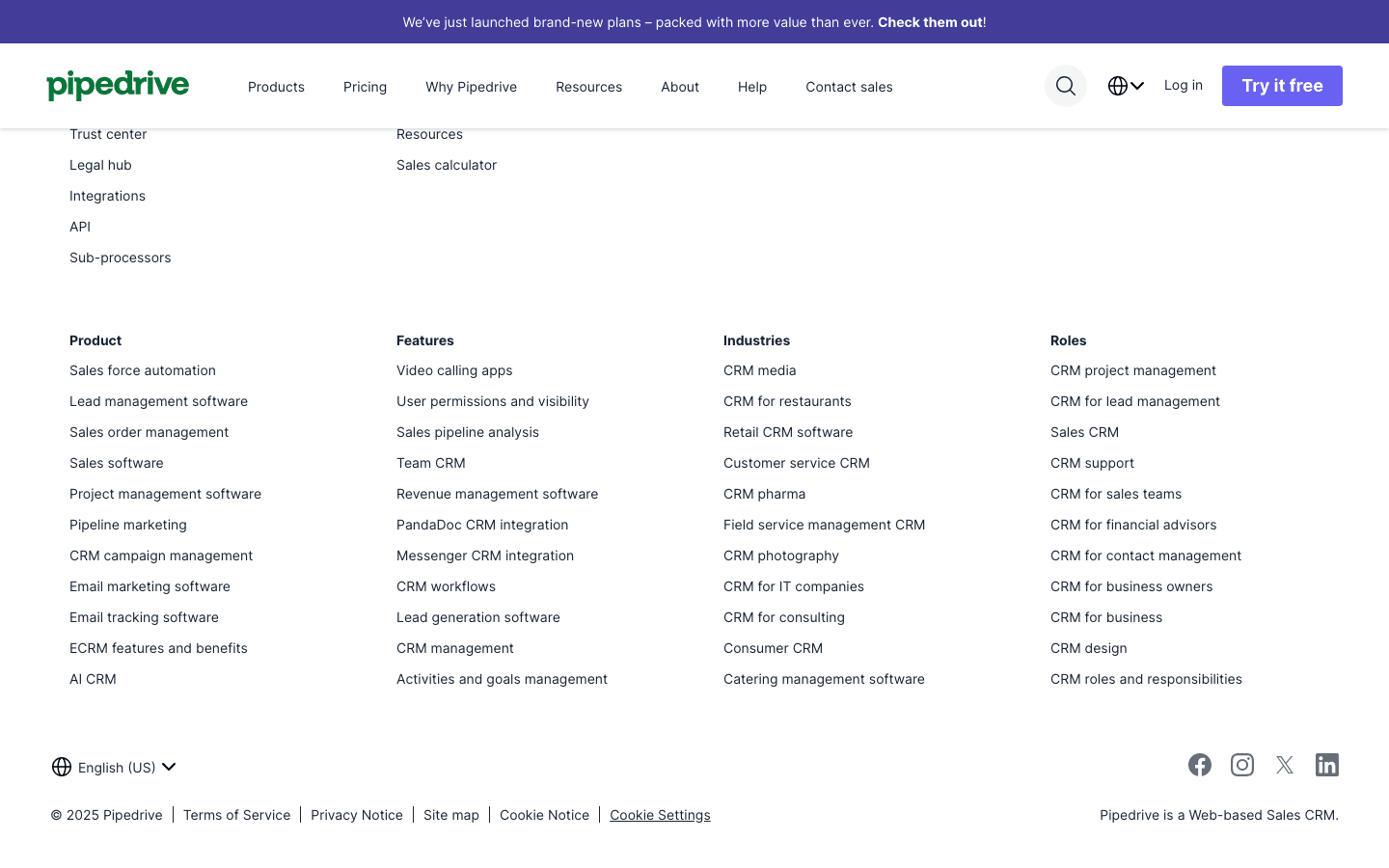
What Makes Pipedrive Stand Out?
- Visual Pipelines: Kanban-style boards make it easy to track deals at a glance.
- Customizable Stages: Tailor pipelines for different products or teams.
- Workflow Automation: Automate follow-ups, task creation, and more (on higher plans).
- Mobile App: Update deals on the go.
Pros and Cons
- Pros: Super intuitive, affordable, great for small/midsize teams. .
- Cons: Limited advanced features on basic plans, no free tier, and not a full marketing suite.
If your team lives and breathes pipeline management, Pipedrive is a no-brainer.
Bardeen: AI Automation for Sales Prospecting and Data Entry
is like having a digital assistant that loves repetitive tasks. It’s a Chrome extension that automates web scraping, data entry, and connects your favorite tools.

Why Use Bardeen?
- No-Code Automation: Build playbooks to scrape data, update CRMs, or move info between apps.
- Web Scraping: Extract leads from LinkedIn, company sites, or anywhere else you can browse.
- Integrations: Works with Google Sheets, Notion, HubSpot, and more.
User Feedback
- Pros: Automation powerhouse, intuitive for tech-savvy users, praised for time savings ().
- Cons: Free plan is limited, paid plans can get pricey if you automate everything, and there’s a learning curve for complex flows.
If you’re tired of copy-paste and want to automate your sales busywork, Bardeen is worth a look.
Zendesk: Customer Support Meets Sales Database
is best known for support, but with Zendesk Sell, it brings sales and service together in one platform.
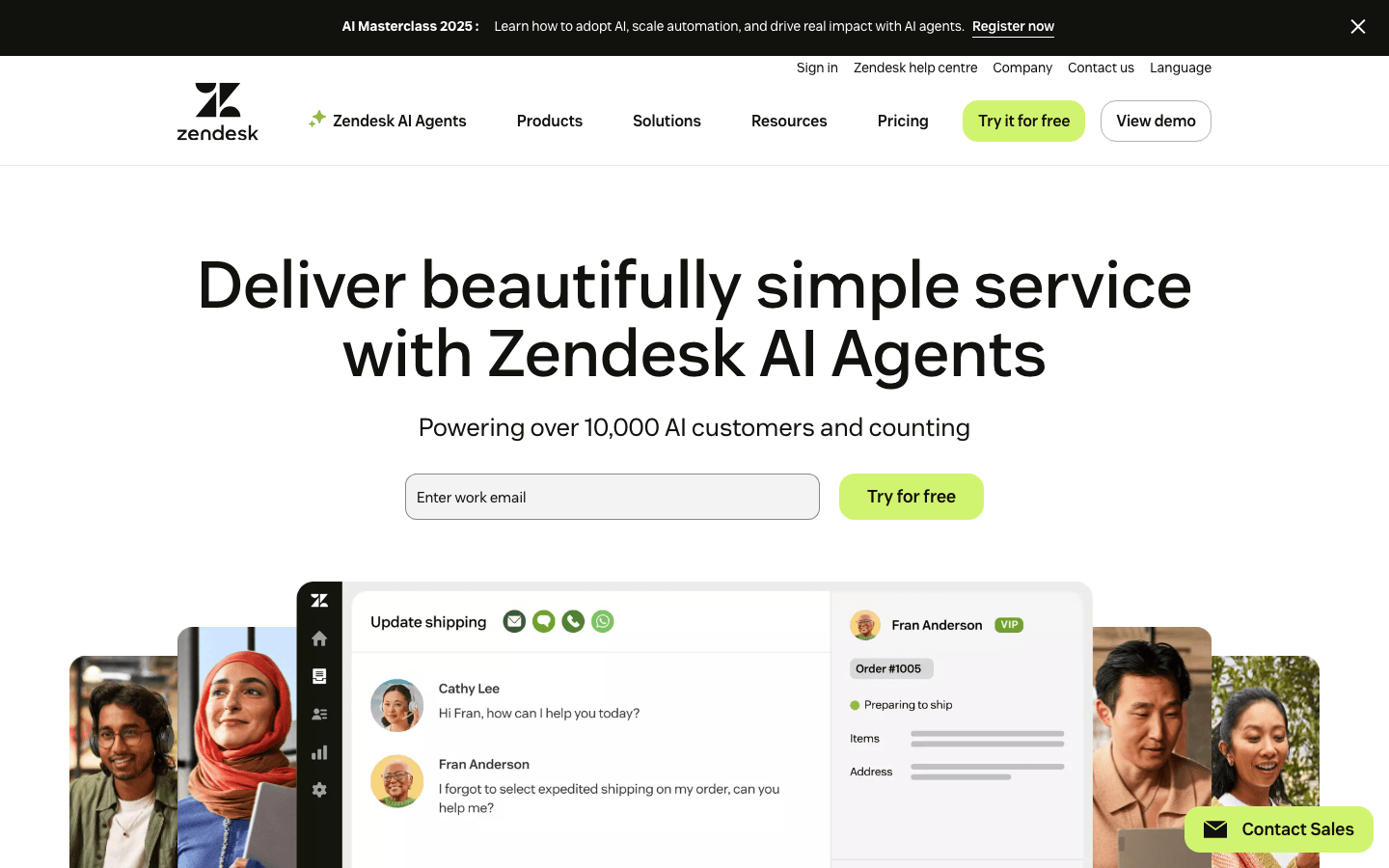
Key Features
- Unified Customer View: Sales and support see the same data, so no more “who’s handling this client?” confusion.
- Omnichannel: Email, phone, SMS, chat, and social all in one dashboard.
- Automation: Route leads, assign tickets, and trigger follow-ups automatically.
Pros and Cons
- Pros: Great for teams where sales and support overlap, strong collaboration tools, robust automation.
- Cons: Higher cost for full features, support is ticket-only, and API call limits can be a headache for heavy integrations.
If your sales process is tightly linked to customer support, Zendesk is a strong contender.
Salesflare: Automated CRM for B2B Sales
is all about making CRM less of a chore. It automates data entry by pulling info from emails, calendars, and social profiles.
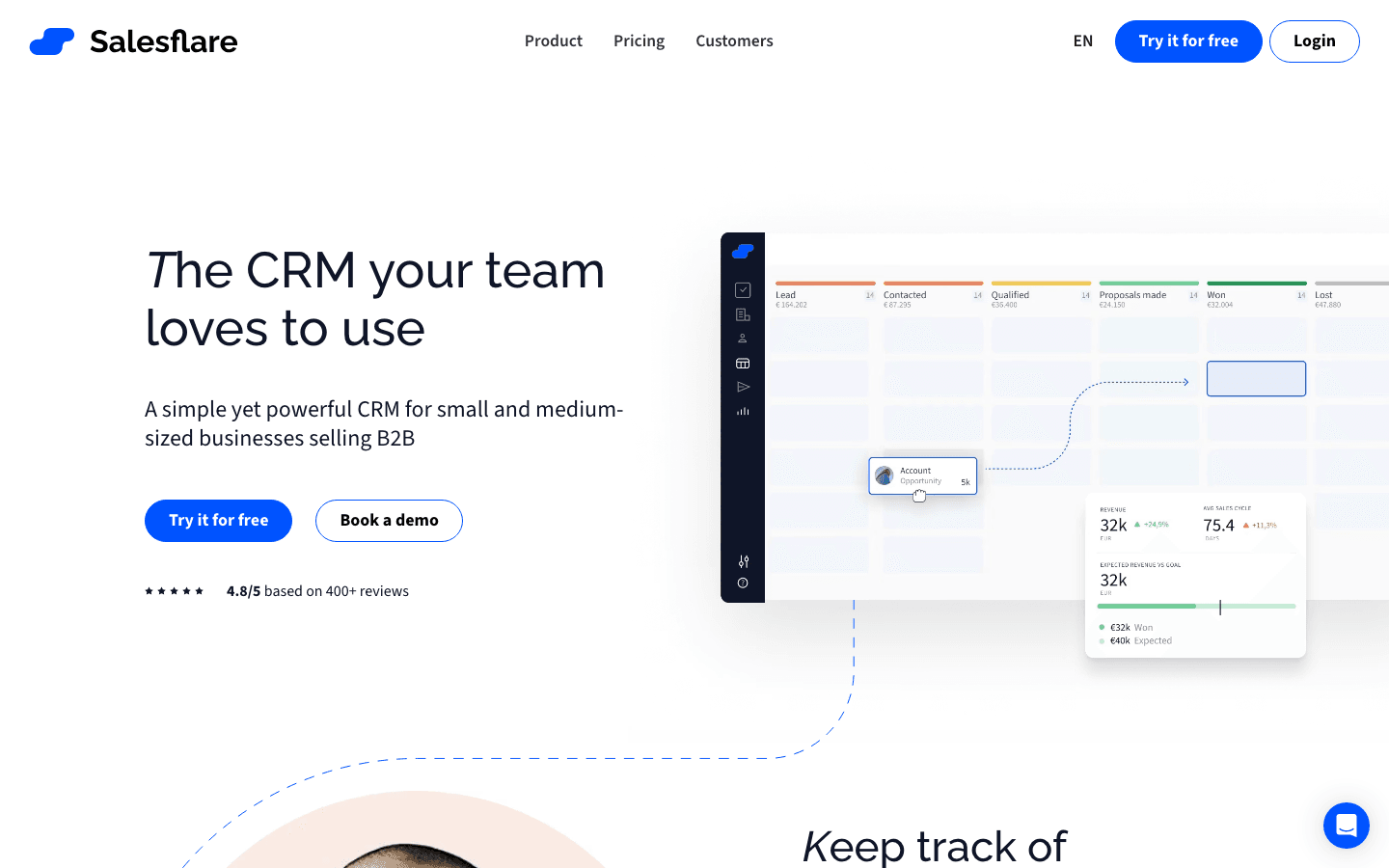
What’s Special?
- Automated Data Entry: Scans email signatures, logs meetings, and keeps contacts up to date.
- Smart Reminders: Nudges you to follow up with leads before they go cold.
- Email Integration: Sidebar in Gmail/Outlook, tracks opens and clicks.
User Ratings
- Pros: Hands-off data entry, great for small B2B teams, easy setup.
- Cons: Not as customizable for large orgs, no free plan, limited integrations beyond core apps.
If your team forgets to update the CRM (or just hates doing it), Salesflare is a breath of fresh air.
Keap: All-in-One CRM and Sales Automation for Small Businesses
(formerly Infusionsoft) is the Swiss Army knife for small businesses. It combines CRM, marketing automation, and payment processing.
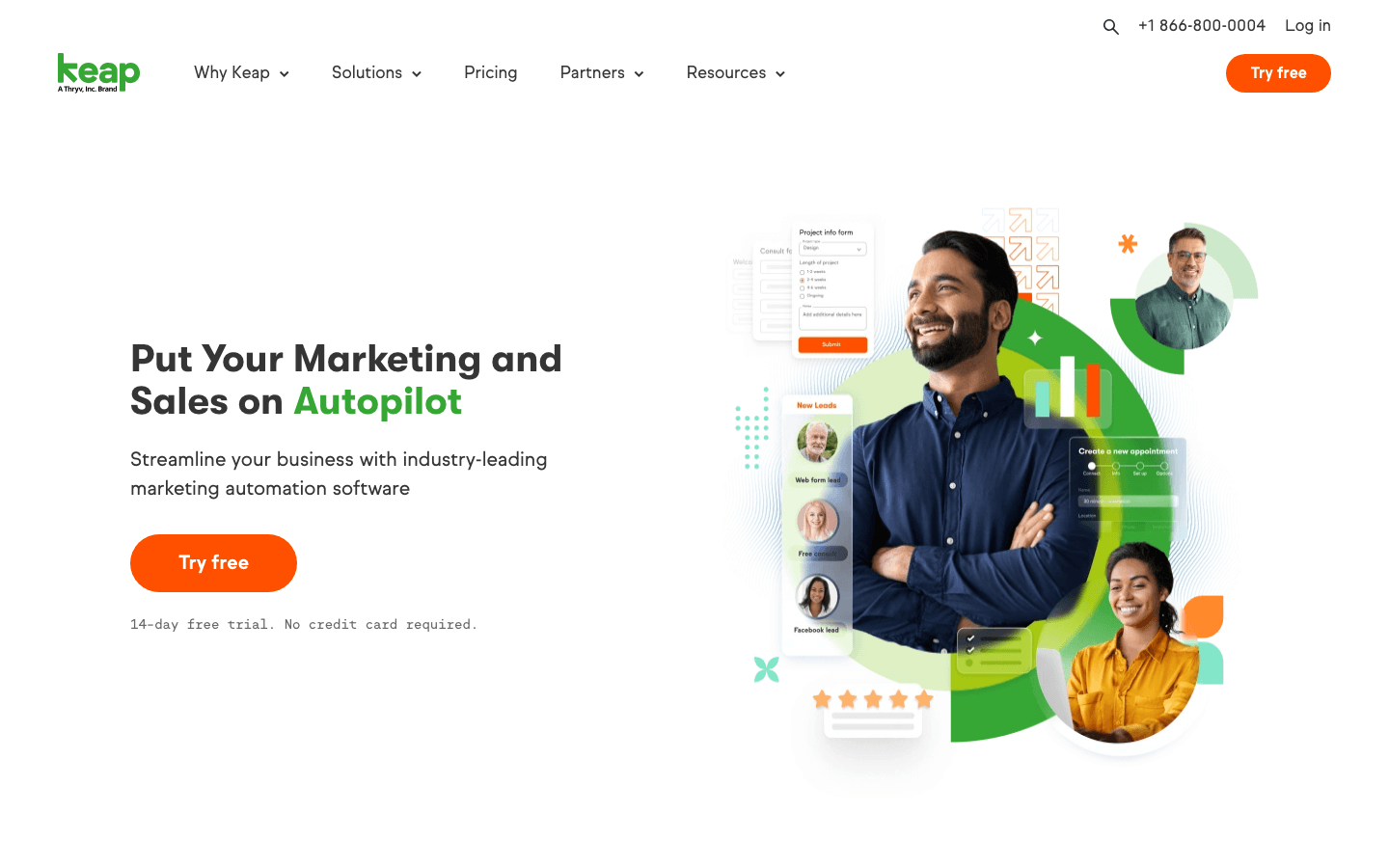
Why Keap?
- Lead Capture: Web forms, landing pages, and automated assignment.
- Automation: Visual drag-and-drop builder for follow-ups, reminders, and campaigns.
- Payments: Built-in invoicing and payment processing.
Pros and Cons
- Pros: Powerful automation, all-in-one platform, strong onboarding support.
- Cons: Higher starting price, onboarding can be intensive, and it’s overkill if you don’t need marketing automation.
If you’re a solopreneur or small business owner who wants to automate everything from lead to invoice, Keap is built for you.
Zoho: Affordable, Customizable CRM Suite
CRM is the workhorse of affordable, customizable sales databases. It’s part of a huge suite of business apps, but stands strong on its own.
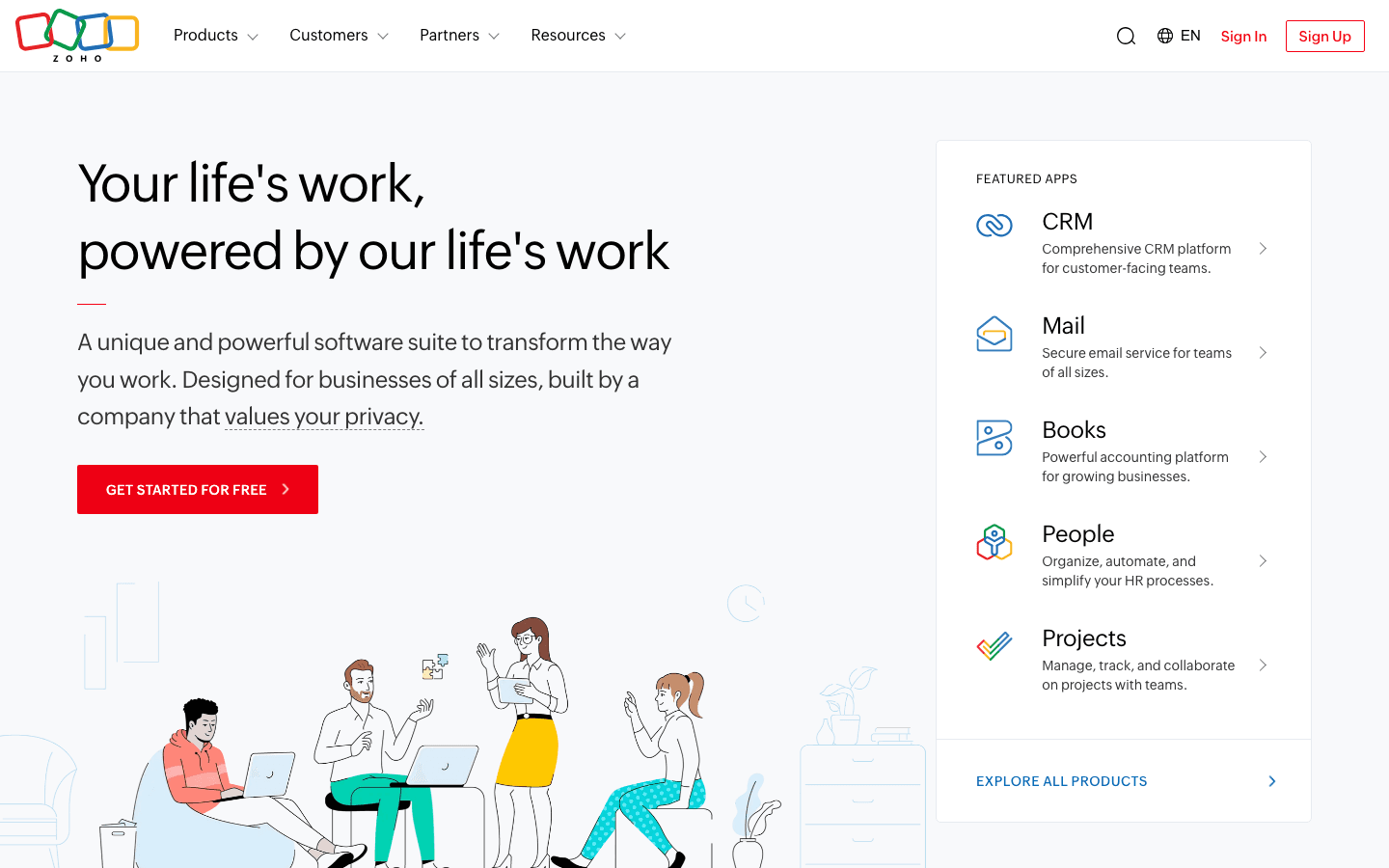
What Stands Out?
- Customization: Custom modules, fields, workflows—tailor it to your process.
- AI Assistant (Zia): Lead scoring, anomaly detection, and natural language queries.
- Integrations: Connects with Zoho’s own apps and a wide range of third-party tools.
Pros and Cons
- Pros: Excellent value, highly customizable, broad integrations.
- Cons: UI can get complex if overloaded, some features only in higher tiers.
If you want a CRM that grows with you and doesn’t break the bank, Zoho is hard to beat.
Freshworks: AI-Powered CRM for Fast-Growing Teams
(by Freshworks) is a modern CRM with built-in AI, designed for teams that want to get up and running fast.
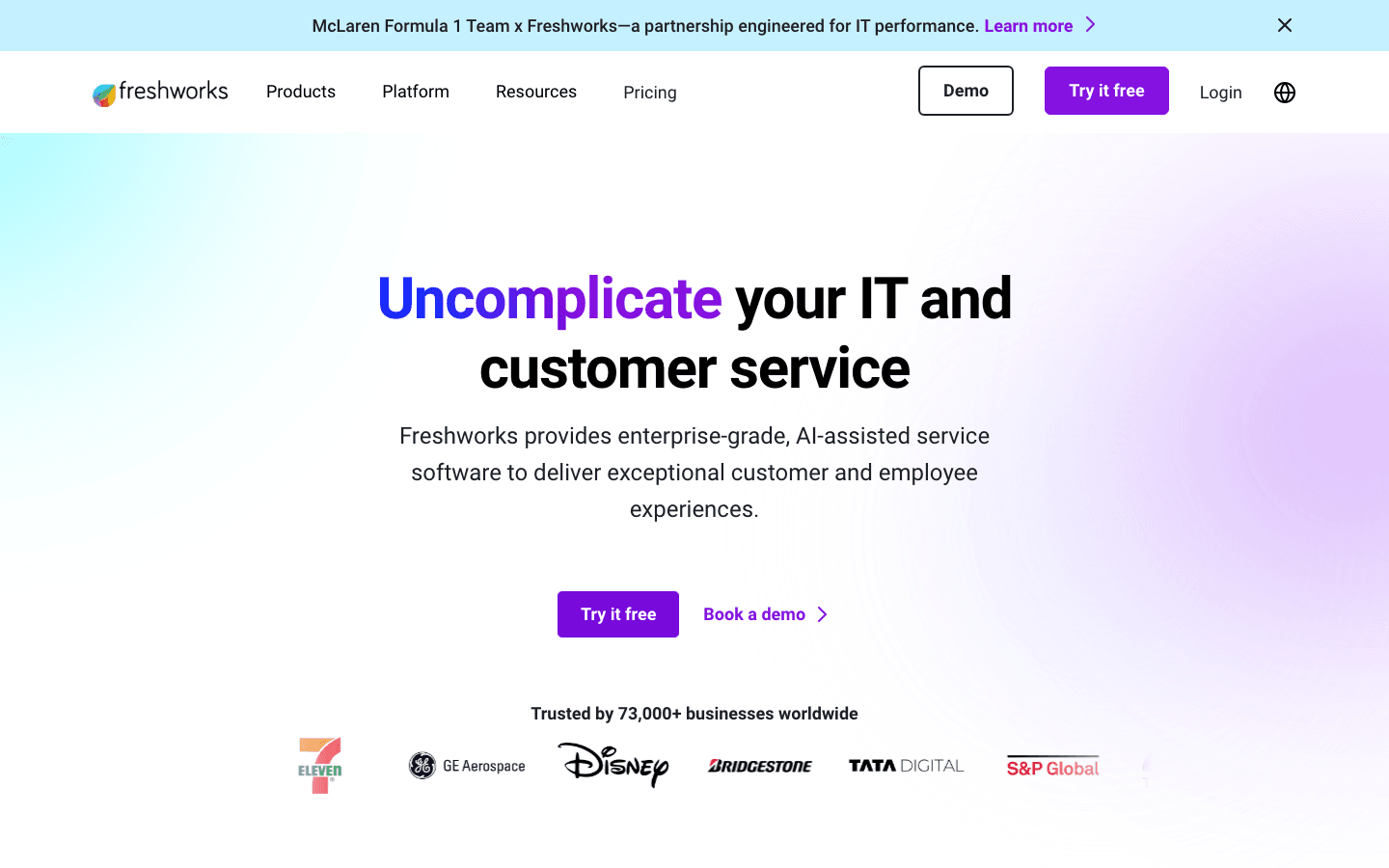
Key Features
- Freddy AI: Predictive lead scoring, deal insights, and contextual email drafting.
- Omnichannel: Built-in phone, email, and chat.
- Quick Setup: Clean UI, easy onboarding, and strong tutorials.
Pros and Cons
- Pros: User-friendly, strong AI features (on higher plans), affordable.
- Cons: AI not available on basic plan, fewer advanced customizations for large enterprises.
If you’re a fast-growing team that wants AI without the Salesforce complexity, Freshsales is a solid pick.
EngageBay: Affordable All-in-One CRM for Small Businesses
is the budget-friendly all-in-one platform that covers CRM, marketing automation, and support.

What You Get
- CRM & Sales: Contact management, pipelines, lead scoring.
- Marketing Automation: Email campaigns, landing pages, workflows.
- Support: Ticketing, live chat, knowledge base.
Pros and Cons
- Pros: Super affordable, feature-rich for the price, unified platform.
- Cons: Limited integrations, basic reporting, English-only UI.
If you’re a small business or startup that needs a bit of everything without spending a fortune, EngageBay is worth a look.
How to Choose the Best Sales Database Software for Your Team
Alright, so you’ve got the options. How do you pick the right one? Here’s my checklist, based on years of trial, error, and “why did we buy this again?” moments:
- Define Your Goals: Are you trying to automate lead capture, improve follow-ups, or get better reporting? Write down your must-haves.
- Involve Your Team: The best CRM is the one your salespeople actually use. Get their input early.
- Check Integrations: List your current tools (email, calendar, marketing, support) and make sure your CRM plays nice with them.
- Test Usability: Do a free trial. Can your team add a lead, move a deal, and run a report without a PhD in software engineering?
- Match Complexity to Your Process: Don’t buy Salesforce if you just need pipeline tracking. Don’t buy a basic CRM if you need deep customization.
- Budget for Growth: Look at both current costs and what it’ll cost to scale. Sometimes paying a bit more upfront saves you a migration headache later.
- Pilot and Plan: Run a pilot with real data. Test support responsiveness. Plan your rollout and data migration.
- Check Security: Make sure the vendor has solid security and compliance practices.
- Read User Reviews: See what real users say about the tool—especially about support, bugs, and hidden costs.
Decision Framework:
| Question | If Yes | If No |
|---|---|---|
| Do you need deep customization? | Salesforce, Zoho | Pipedrive, Freshsales |
| Is automation a top priority? | Thunderbit, Bardeen, Salesflare | Pipedrive, EngageBay |
| Do you want all-in-one (CRM + marketing + support)? | EngageBay, Zoho, Keap | Pipedrive, Salesflare |
| Is your team non-technical? | Pipedrive, Freshsales, Thunderbit | Salesforce, Bardeen (for advanced flows) |
| Are you on a tight budget? | EngageBay, Zoho | Salesforce, Keap |
Conclusion: Finding the Best Sales Database Software for Your Business
Here’s the truth: there’s no single “best” sales database for everyone. The right tool is the one that fits your team, your process, and your growth plans. Thunderbit is a lifesaver for teams who want to automate web data collection and push it straight into their workflow. Salesforce is the king of customization for big orgs. Pipedrive is perfect for visual pipeline fans. And there’s a tool on this list for just about every flavor of sales team.
Remember, adoption is everything. A simple tool your team loves will drive more revenue than a complex one they avoid. Take advantage of free trials, read real user reviews, and involve your team in the decision.
And if you’re ready to save hours on lead gen, check out —I might be biased, but I built it for folks just like you. Here’s to more selling, less clicking, and a sales database that actually helps you grow.
FAQs
1. What should I look for when choosing sales database software?
Focus on ease of use, integration capabilities, automation and AI features, scalability, and user feedback. The best software should streamline your workflow, reduce manual tasks, and support your growth without overwhelming your team.
2. Which sales database tools are best for small teams or startups?
For small teams, tools like Thunderbit, Pipedrive, Zoho, and EngageBay offer user-friendly interfaces, essential CRM features, and affordable pricing. Thunderbit stands out for automated lead generation, while Pipedrive and Zoho offer visual pipelines and customization.
3. How does Thunderbit help with sales prospecting?
Thunderbit uses AI to automate web scraping, form autofill, and scheduled data extraction. It allows non-technical users to collect and export leads from websites directly into their CRMs or spreadsheets—no coding needed.
4. Is Salesforce suitable for every sales team?
Not necessarily. Salesforce is ideal for large organizations that need deep customization, robust analytics, and a wide integration ecosystem. However, it may be too complex and expensive for small teams or those with simpler workflows.
5. How do automation and AI features improve sales performance?
Automation and AI reduce manual work like data entry, follow-ups, and lead scoring. This gives reps more time to focus on selling, improves lead conversion, enhances forecast accuracy, and supports better decision-making through smart insights.
Learn More: